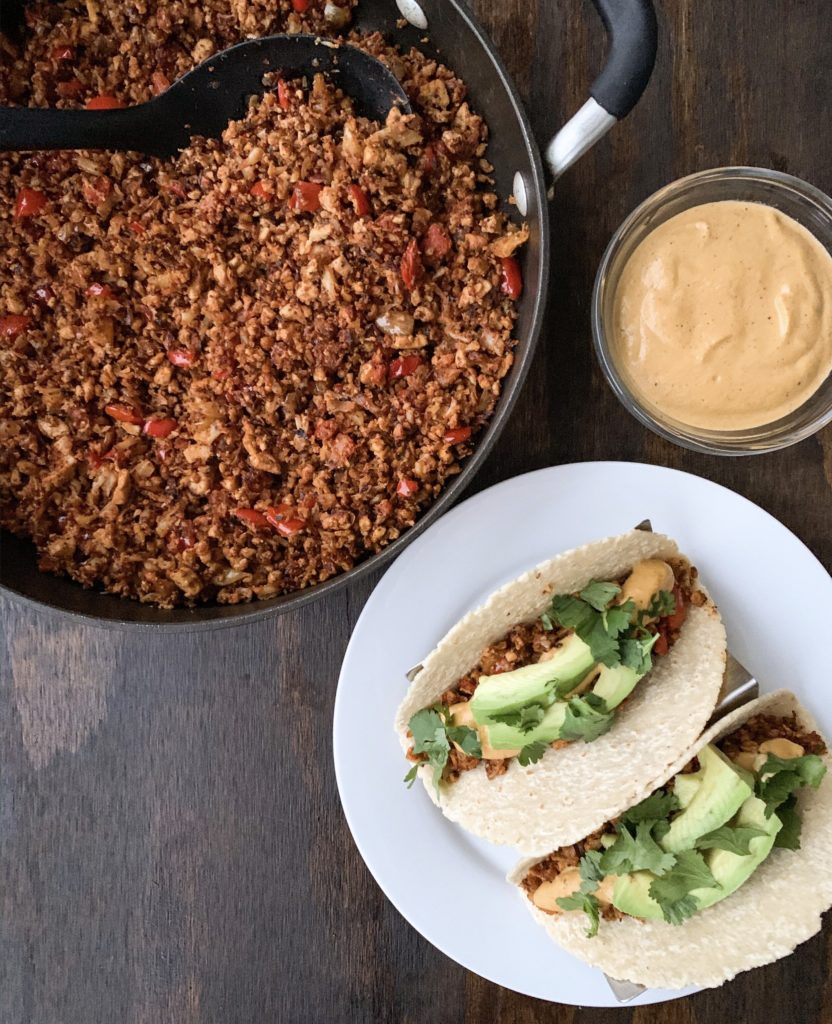The Wholesome Journey - Group Nutrition Coaching Program
Mentorship Program, 1:1 Nutrition Coaching with Alison
What do you want to learn more about?
Program Login
Podcast Features
January 9, 2020
Alison Tierney, MS, RD, CD, CSO
Alison is a registered dietitian, board-certified in oncology nutrition, and a cancer thriver. Her expertise in oncology nutrition and personal experience with her own cancer diagnosis and its treatment provide her with the unique perspective of being able to relate to her clients on an entirely different level. Her content is consistently focused on evidence-based guidelines and seeks to increase the awareness of the power of nutrition to complement traditional cancer therapies.
- Alison Tierney, MS, RD, CD, CSO
- Alison Tierney, MS, RD, CD, CSO
- Alison Tierney, MS, RD, CD, CSO
- Alison Tierney, MS, RD, CD, CSO
- Alison Tierney, MS, RD, CD, CSO
- Alison Tierney, MS, RD, CD, CSO
- Alison Tierney, MS, RD, CD, CSO
- Alison Tierney, MS, RD, CD, CSO
- Alison Tierney, MS, RD, CD, CSO
- Alison Tierney, MS, RD, CD, CSO
Why You Don’t Have to Combine Plant Proteins to Meet Your Protein Needs
There are several myths out there regarding the plant-based diet – including the myth of complementary proteins in the vegetarian and vegan diet.
Other common myths out there?
You can’t get enough calcium without dairy. Myth.
You need red meat or animal protein to meet your iron needs. Myth.
It is difficult to meet your protein needs without animal products. Myth.
We’ve dispelled them all here on the blog. Which popular belief remains?
You need to compliment plant proteins at each meal in order to have a complete protein. Myth.

Research Changes: Myth of Complementary Proteins Debunked
For the purpose of writing this blog post, I pulled out my old nutrition textbook. It says, “Two or more plant proteins should be combined to compensate for deficiencies in essential amino acid content in each protein”. (1)
In my years of practice, I’ve learned there are several nutrition related myths floating around the medical community some can’t seem to part with. The common thought process of , “my textbook said xyz, so it must be true” is a common issue.
As a dietitian, this is one area of practice I still struggle with. If it was learned in medical school, dietetics school, etc. it must still be true.
Research changes. New information comes to light.
That is exactly the case of the myth behind complementary proteins.
Let’s start from the beginning (I’ll make it brief).
Amino acids are the building blocks for protein synthesis (or, protein creation). The body needs 20 different amino acids to function. Each amino acid is important, however, 9 of these 20 are considered essential, meaning the human body cannot create them in sufficient amounts on its own. Therefore, we need to consume them in our diet. As for the other 11 amino acids, the body can create on its own (through a process called ‘transamination’ for all of my nerds out there).
When it comes to animal versus plant proteins, one of the biggest differences is the proportions of essential and nonessential amino acids. Animal proteins contain all 9 essential amino acids. Because animal proteins contain all essential amino acids, they are classified as complete or “high-quality proteins”. (My nutrition textbook calls them high-quality — I beg to differ.)
Some plant-based proteins are lower in one (or two) amino acids and therefore have been classified as incomplete.
Note my emphasis on the word lower.
Plant Proteins Have a Limiting Amino Acid
Yes, some plant proteins contain a lower amount of a particular amino acid (i.e. lysine is low in grains, making lysine the limiting amino acid). But plant proteins are not incomplete. In fact, the only incomplete protein is gelatin, which is missing the amino acid tryptophan.
Since plant proteins (with a few exceptions such as soy, which contains all 9 essential amino acids) have a limiting amino acid, they were deemed incomplete proteins. When in fact, plant proteins contain all essential amino acids.

Where Did the Myth Come From?
The original study deeming plant proteins incomplete and therefore insufficient for growth dates back to a 1912 study done on rats. The researchers found rats did not grow sufficiently on plants. (2)
But we aren’t rats. In fact, milk from rats has 10 more protein than human breast milk and rats grow 10 times faster than humans. (3) For the sake of disease prevention, we do not want to grow as quickly as rats (or cows)!
From this rat study, came the myth of complementary proteins: in order to achieve adequate growth and meet our essential amino acid needs, “two or more plant proteins must be combined to compensate for deficiencies in essential amino acid content in each protein”. (1) Again, this has been proved to be inaccurate.
For example, the limiting amino acid in nuts and seeds is lysine. Therefore, it was recommended to consume legumes with nuts and seeds since legumes contain high amounts of lysine.
However, this myth and several other myths related to plant proteins, was indeed declared a myth long ago. (4)

The truth of the matter is, our bodies are incredibly intelligent. Our bodies store a pool of amino acids allowing our body to use the amino acids it needs, whenever it needs it. (5)
Unless you are consuming a diet of only gelatin and thus consuming a variety of foods, it is nearly impossible to have a diet that is sufficient in calories be deficient in protein.
What’s the takeaway?
Aim to meet your protein needs through a variety of whole, plant-based foods and you’ll cover your nutrition bases from vitamin A to protein, to zinc. (Okay, with the exception of vitamin B12, but more on that later.)
References:
- Wardlaw, G. M., & Hampl, J. S. (2009). Perspectives in Nutrition. Boston: McGraw-Hill Higher Education.
- T B Osborne, L B Mendel. Amino-acids in nutrition and growth. Abtlerhdden: Zeitschr. f. phvsiol. Chem., Ixxvii, p. 27, 1912.
- T A Davis, H V Nguyen, R Garcia-Bravo, M L Fiorotto, E M Jackson, D S Lewis, D R Lee, R J Reeds. Amino acid composition of human milk is not unique. J Nutr. 1994 Jul;124(7):1126-32.
- V R Young, P L Pellett. Plant proteins in relation to human protein and amino acid nutrition. Am J Clin Nutr. 1994 May;59(5 Suppl):1203S-1212S.
- H N Munro. CHAPTER 34 – Free Amino Acid Pools and Their Role in Regulation. Mammalian Protein Metabolism. 1970. 299–386.
The Myth of Complementary Proteins
Wholesome LLC is not a medical practice, and its employees cannot offer medical advice. This website provides educational information but it is not a substitute for medical advice from a licensed medical professional who is familiar with your particular facts and circumstances. The information contained on this website is not intended to diagnose, treat, or cure any disease and shall not be construed as medical advice. The information and education on this website is provided for you to use at your own discretion.
You can further review our disclaimer here.
Wholesome
About Alison
Courses & Programs
The Wholesome Journey
Free Resources
FAQs
Press & Media
Recipes
Blog
Contact Us
Shop
© 2025 Wholesome, LLC All rights reserved.
Privacy Policy
Terms of Use
Disclaimer
Mobile Terms of Service